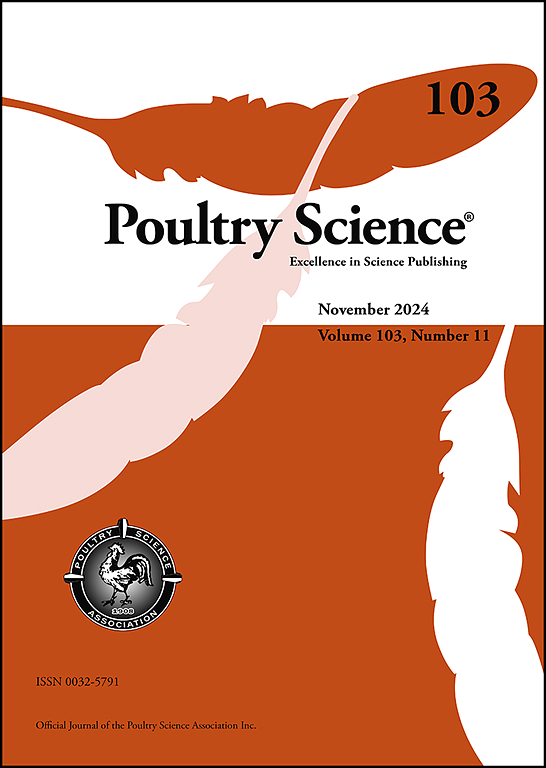Prediction of chicken breast meat freshness based on hyperspectral imaging technique and high-throughput sequencing
IF 3.8
1区 农林科学
Q1 AGRICULTURE, DAIRY & ANIMAL SCIENCE
引用次数: 0
Abstract
In this article, the hyperspectral imaging technique and the high-throughput sequencing were combined to construct prediction models for the freshness of chicken breast meat. The quality indicators including color, pH, TVC, TVB-N and TBARS were measured to reflect the freshness changes of chicken breast meat under 4 ℃ storage. Meanwhile, spectral images of chicken breast meat were obtained using visible near-infrared (400-1,000 nm) hyperspectral imaging. Through high-throughput sequencing, the major spoilage bacteria including Pseudomonas, Brochothrix and Escherichia were screened out to construct the models for predicting chicken freshness. After spectral preprocessing and characteristic wavelength selection, the prediction models were established using partial least squares regression (PLSR) and support vector machine (SVM). Among the models, the SNV-PLSR model based on characteristic wavelength for Pseudomonas content (Rp2=0.84, RMSEP=0.38, RPD=3.79) posed stronger predictive and generalization abilities. Therefore, the Pseudomonas count was chosen as a characteristic indicator for establishing an HSI-based prediction model to reflect the freshness of chicken breast meat.
求助全文
约1分钟内获得全文
求助全文
来源期刊

Poultry Science
农林科学-奶制品与动物科学
CiteScore
7.60
自引率
15.90%
发文量
0
审稿时长
94 days
期刊介绍:
First self-published in 1921, Poultry Science is an internationally renowned monthly journal, known as the authoritative source for a broad range of poultry information and high-caliber research. The journal plays a pivotal role in the dissemination of preeminent poultry-related knowledge across all disciplines. As of January 2020, Poultry Science will become an Open Access journal with no subscription charges, meaning authors who publish here can make their research immediately, permanently, and freely accessible worldwide while retaining copyright to their work. Papers submitted for publication after October 1, 2019 will be published as Open Access papers.
An international journal, Poultry Science publishes original papers, research notes, symposium papers, and reviews of basic science as applied to poultry. This authoritative source of poultry information is consistently ranked by ISI Impact Factor as one of the top 10 agriculture, dairy and animal science journals to deliver high-caliber research. Currently it is the highest-ranked (by Impact Factor and Eigenfactor) journal dedicated to publishing poultry research. Subject areas include breeding, genetics, education, production, management, environment, health, behavior, welfare, immunology, molecular biology, metabolism, nutrition, physiology, reproduction, processing, and products.
 求助内容:
求助内容: 应助结果提醒方式:
应助结果提醒方式:


